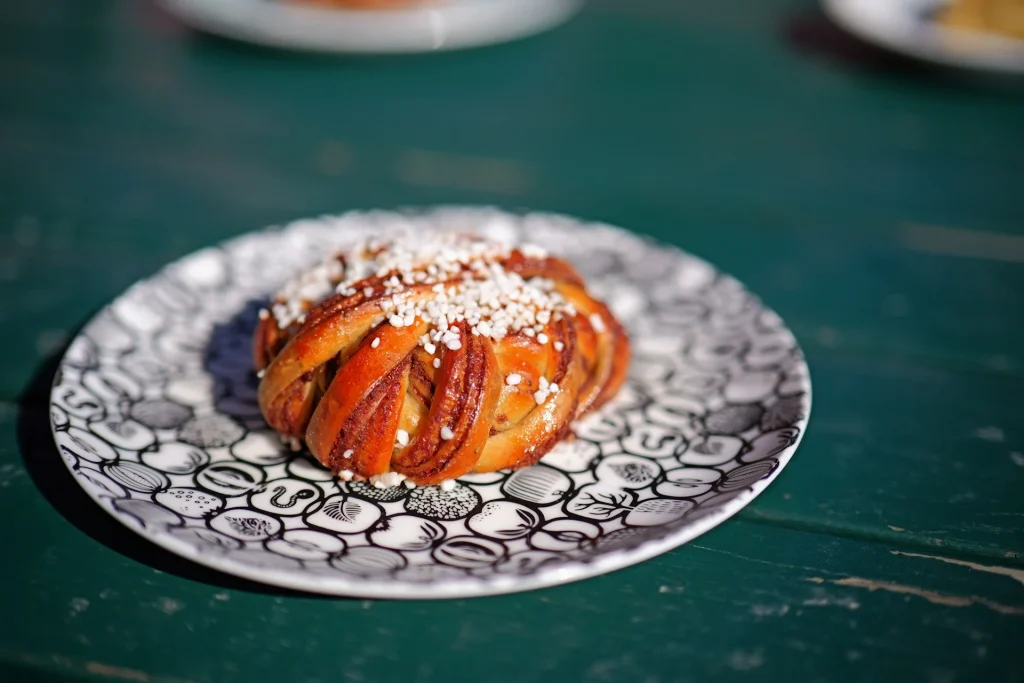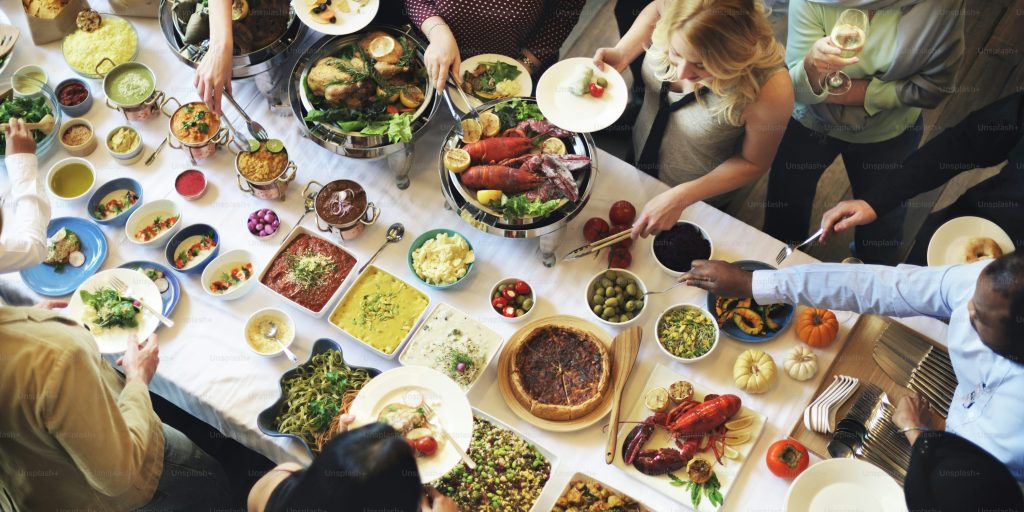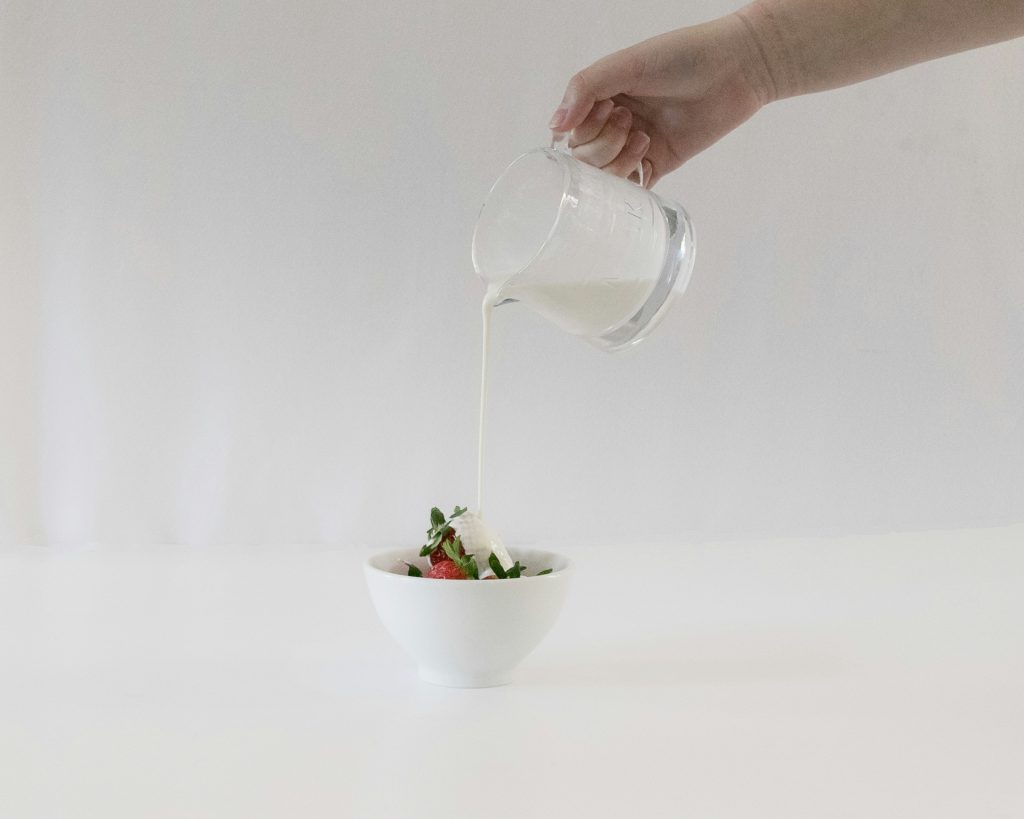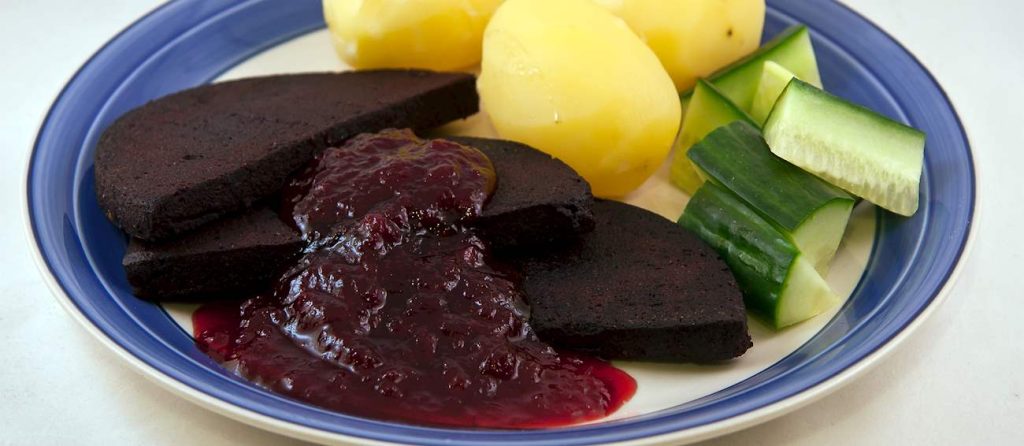Discover 10 must-try Swedish foods, where to find them at their best, and insider foodie travel tips from local experts. Sustainable, delicious, and oh-so-Swedish!

Sweden: More Than Just Meatballs
You’ve heard of IKEA meatballs, but Swedish cuisine is slightly deeper than that. From fresh seafood pulled straight from the icy waters of the Baltic to slow-fermented bread that will change your carb-loving life, the food of this country has a unique history and flavored with influence from neighboring cultures. And let’s be real—Swedes have mastered the art of balancing indulgence with sustainability, making their food scene one of the most eco-friendly in the world.
At Cerca Travel we love this particular mission, so we’ve scoured Sweden (yes, including the Arctic North) to bring you the 10 most quintessential Swedish foods, investigate why they are important to the Swedish culture, and find out exactly where to eat them like a local.

1. Kanelbullar (Cinnamon Buns)
The Swedish Coffee Break You Need In Your Life
Unlike the frosting-heavy American version, a true kanelbulle is lightly spiced, subtly sweet, and flavored with cardamom. I love cardamom so this bun speaks directly to my heart. It’s best enjoyed during fika, the beloved Swedish coffee break ritual.
The tradition of fika, which means “to have coffee and something sweet”, has been around for centuries and is deeply rooted in Swedish work-life balance, socializing, and the country’s love affair with coffee.
Sweden’s obsession with coffee started in the 18th century when King Karl XII returned from Turkey and introduced the drink to the Swedes. By the 19th century, coffee was everywhere, and the idea of taking a pause to enjoy a cup with a pastry became ingrained in everyday life. The word “fika” itself is thought to have originated from a playful inversion of the word “kaffi” (old Swedish for coffee).
Fika is not just about the coffee—it’s about taking a break, connecting with others, and slowing down. In Swedish workplaces, it’s an unwritten rule that employees take at least one fika break a day. Swedes still consume one of the highest amounts of coffee per capita in the world, and cafés dedicated to fika culture can be found in cities like Stockholm, Gothenburg, and beyond.
Key Souvenir: What to bring home? Kaffesked – a traditional wooden spoon, usually made of birch, used to stir coffee.
Where to Find It:
Vete-Katten (Stockholm) – A legendary café that’s been slinging the best buns since 1928. There are now several outposts in the city, but the original is located at Kungsgatan 55.
Brogyllen (Gothenburg) – A cozy spot where the scent of fresh kanelbullar will pull you in off the street.

2. Smörgåsbord (Swedish Buffet of Dreams)
Not Just a Fancy Word—A Whole Experience
This entry is cheating a little – it’s not just one food, it’s a food experience. A smörgåsbord is the ultimate Swedish food feast – if you want a crash course in Swedish cuisine, this is it.
This legendary feast has evolved over centuries, starting as a simple spread for travelers and evolving into a national dining tradition known worldwide.
Did Sweden invent the buffet?
The earliest version of the smörgåsbord dates back to the 14th century, when it was known as the “brännvinsbord” (literally “brandy table”). This wasn’t a full meal but rather a pre-dinner snack table offering bread, butter, cheese, fish, and schnapps (brännvin). Wealthier households would present these small bites to impress guests before the main course.
By the 18th and 19th centuries, the concept expanded into a larger spread of cold and hot dishes, typically served in multiple courses. The tradition became popular among the Swedish aristocracy, where elegant smörgåsbords were laid out at grand gatherings and celebrations.
By the mid-19th century, with industrialization and increased travel, hotels and restaurants began offering smörgåsbords as an accessible meal option, and it eventually became a standard dining experience in Sweden.
Sweden officially introduced the smörgåsbord to the world during the 1939 New York World’s Fair, where it was featured at the Swedish Pavilion. The concept quickly gained popularity internationally, influencing buffet-style dining across Europe and the U.S.
Cultural Significance Today
Today, the smörgåsbord is often reserved for special occasions, holidays, and major celebrations like Midsummer, Christmas (Julbord), and Easter. It is a showcase of Sweden’s most iconic foods, typically including:
Pickled herring (sill) in various flavors
Gravlax (cured salmon)
Meatballs (köttbullar)
Crispbread (knäckebröd)
Cheeses, pâtés, and sausages
Janssons frestelse (creamy potato anchovy casserole – see further down on the list)
How to do it like a local:
The art of the smörgåsbord is about pacing yourself and following the proper order—you start with cold fish dishes, move on to cold cuts and meats, then finish with warm dishes and desserts. And, of course, no smörgåsbord is complete without schnapps and a few rounds of Swedish drinking songs!
Where to Find It:
Grand Hôtel (Stockholm) – The Veranda at the Grand Hotel has a legendary smörgåsbord that is as fancy (and delicious) as it gets.
Julbord at Skansen (Stockholm, seasonal) – A historic Christmas smörgåsbord in an open-air museum.

3. Toast Skagen (Shrimp Toast Perfection)
Sweden’s Greatest Open-Faced Sandwich
This dish combines buttery toast, cold-water shrimp, mayonnaise, and dill, usually topped with a dollop of fish roe. Classy and delicious. Also common, you can find it on the menu of most restaurants that serve Swedish dishes.
Where to Find It:
Wedholms Fisk (Stockholm) – A seafood temple where Toast Skagen is an art form.
Sjömagasinet (Gothenburg) – A beautiful waterfront restaurant in a location that used to be a warehouse belonging to the East India Company, perhaps as far back as 1775. They serve gorgeous platters of fresh seafood.
Den Gyldene Freden (Stockholm) – One of Stockholm’s oldest restaurants serving traditional Swedish dishes. Get yer meatballs here too.

4. Surströmming (Fermented Herring)
The Dish That Separates the Foodies From the Weak
This infamous fermented herring is known for its intense aroma and is often eaten outdoors with thin bread, potatoes, and onions. It is also used in traditional dishes – see Jansson’s Temptation coming later in the list.
Where to Find It:
Höga Kusten (High Coast, Northern Sweden) – Home to Surströmmingsskivan (in Alfta, Hälsingland) the annual fermented herring party every August.
Fiskarfänget – on the High Coast in the small town of Norrfällsvikens, an old fishing village that dates to the 1600s. Go for lunch.
Nystekt Strömming (Stockholm) – If you want a milder intro to Swedish herring, or if you want to explore Stockholm’s street food scene, then this food stand is a must.

5. Räkmacka (Prawn Sandwich)
The King of Swedish Seafood Sandwiches
Stacked with hand-peeled shrimp, egg, mayo, dill, and lemon, this sandwich is “Sweden on toast”.
Where to Find It:
Varmskog Cafe (Klassbol) – Serving a massive version, the rye toast buried beneath a heap of fresh shrimp.
Heaven 23 (Gothenburg) – This place is famous for its king shrimp räkmacka with skyline views.
6. Janssons Frestelse (Jansson’s Temptation)
Sweden’s Ultimate Comfort Food
A creamy potato casserole made with anchovies, onions, and cream. The ultimate Swedish comfort food – not unlike American mac-n-cheese for where it sits in the food lexicon.
You’ll find it in many places, in various incarnations.
Where to Find It:
Stockholms Gästabud (Stockholm) – Serving traditional Swedish and Scandinavian dishes in a warm, pub-like atmosphere.
Kometen (Gothenburg) – A legendary spot for classic Swedish cuisine.

7. Filmjölk (Swedish Cultured Dairy)
Sweden’s Favorite Breakfast Staple
A sour, drinkable yogurt that Swedes have with muesli or crispbread for breakfast. It’s not unlike kefir, but uses different cultures to create a product not found anywhere else. Originally it is thought that Filmjölk was developed by farmers who needed a milk product that lasted longer than regular milk for when they were traveling for several days during summer. Other accounts date it back to the Viking era.
Where to Find It:
Stockholm Farmers’ Market – Fresh, locally made filmjölk from sustainable dairy farms.
Swedish grocery stores

8. Kalops (Swedish Beef Stew)
The Classic Swedish Winter Warmer
A slow-cooked, aromatic beef stew seasoned with allspice, traditionally eaten in winter.
Where to Find It:
Pelikan (Stockholm) – A classic beer hall serving old-school Swedish comfort food. Great for large groups.
Stora Saluhallen (Gothenburg) – A market hall dating back to 1889 with food stalls including produce, fish, meat, bakeries and restaurants. Check out The Kågebaren for Swedish home-cooking favorites. (Go for lunch, the hall closes at 6pm.)

9. Ostkaka (Swedish Cheesecake)
Sweden’s Custardy Cheesecake Delight
A mild, custardy cheesecake, usually served with lingonberry jam. It is traditionally made using curdled milk, eggs, cream, almonds, and sugar, giving it a mildly sweet, slightly grainy texture – and in that way is a little different than the traditional American cheesecake. Plus – there is no crust on traditional Ostkaka and it is usually served room temperature or slightly warmed, rather than chilled. You’ll find it in most good bakeries and pastry shops.
Where to Find It:
Sundbergs Konditori (aka Sundberg’s Confectionary) (Stockholm) – Sundberg’s confectionery was founded in 1785 by the pastry chef and confectioner Gustaf Adolf Sundberg, and although the shop was sold by the family in 1944 it still holds the honor of the city’s oldest café.
Sussie’s Café (Småland) – Småland is known for its traditional Ostkaka (as well as for being the birth place of Ikea) served with lingonberries foraged from the nearby forests. Sussie’s is an neighborhood institution, baking Ostkaka from a generational recipe handed down.

10. Blodpudding (Blood Pudding)
A Traditional Swedish Superfood
A traditional Swedish blood sausage, often eaten with lingonberries and crispbread. It is made primarily from pig’s blood, rye flour, and spices. While blood-based dishes exist in many cultures—like the British black pudding, German blutwurst, or Spanish morcilla—Swedish blodpudding has a distinctly Scandinavian twist that sets it apart. It has a sweeter, more aromatic flavor than other blood sausages thanks to spices like clove and ginger and the addition of syrups, and is slightly denser than it’s European cousins due to the rye flour.
Where to Find It:
Tradition (Stockholm) – A restaurant focused on classic Swedish dishes with a modern twist.
But what about the meatballs?!?
Yes yes, Swedish meatballs really are traditional. Swedish meatballs, called köttbullar, have been around for hundreds of years. Legend has it that King Charles XII of Sweden brought the concept of meatballs back from Turkey in the early 18th century, after spending time in exile in the Ottoman Empire. Over time, Swedes adapted the recipe, making it smaller, softer, and served with cream-based sauce rather than the spice of peppers. They are usually flavored instead with the warm spices of the region, like allspice, and served with Swedish lingonberry jam.
By the 19th century, Swedish meatballs had become a household favorite, appearing in classic Swedish cookbooks and cementing their status as a national dish.
So there you have it – 10, well actually 11, classics of Sweden that you should not miss on your authentic Swedish culinary adventure.